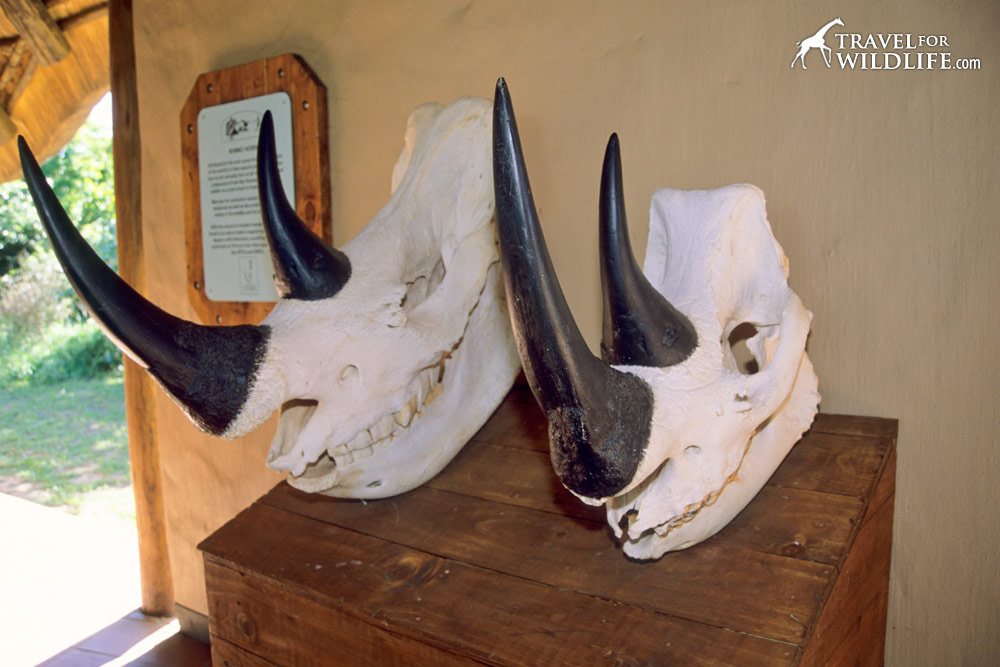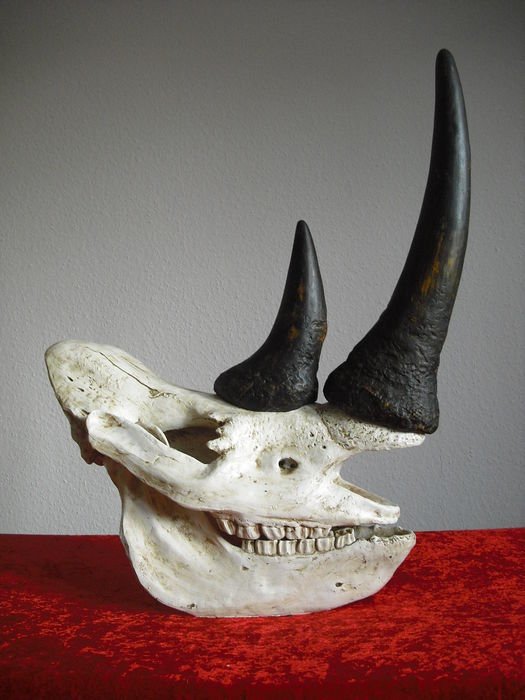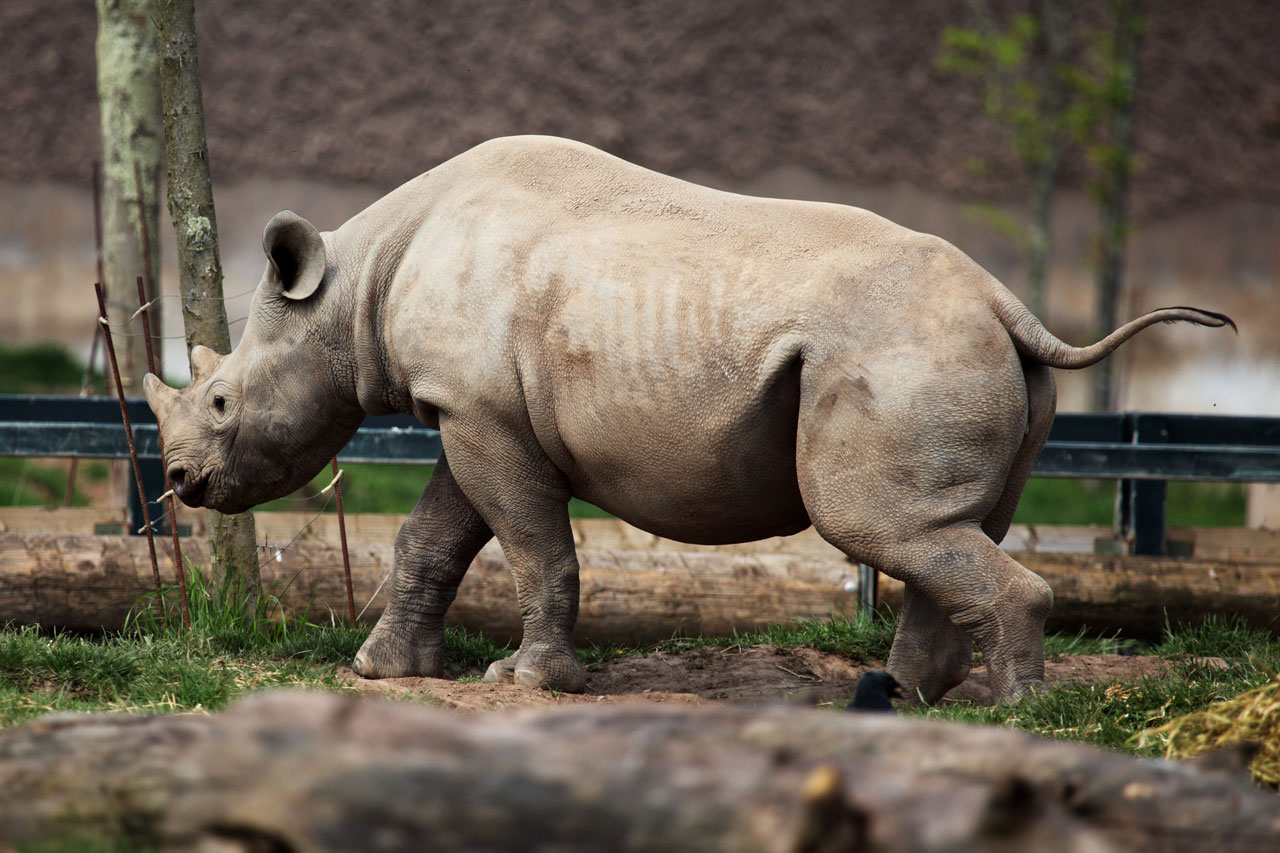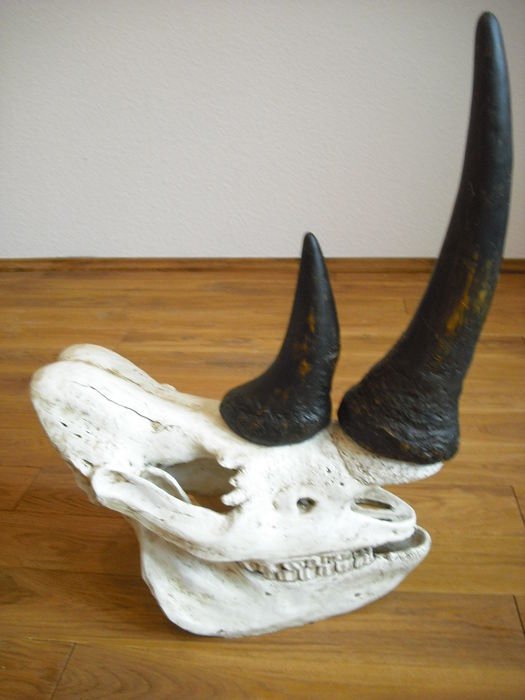
Black Rhino Skull "The rhino is the only mammal with horns… Flickr
Black rhino populations suffered a drastic decline at the end of the 20th century. Between 1970 and 1993, the population of black rhinos decreased by 96% from approximately 65,000 to only 2,300 surviving in the wild. Since 1996, intense anti-poaching efforts and strategic translocations to safer areas have allowed the species to slowly recover.

A woolly rhinoceros skull Pleistocene with replica horn 84cm long £3000/5000 From the Barcelona
A western black rhino skull from an animal shot by a sportsman in 1911. Public domain, via Wikimedia Commons. The views expressed are those of the author(s) and are not necessarily those of.

Recording the Anthropocene Duke University Libraries
The black rhinoceros is best known for its two horns protruding from the skull, which are made of keratin. They have thick skin which protects them from the sharp grasses and thorns found in the African savannah. A black rhino's upper lip is prehensile, and is used to grasp leaves and twigs when eating. Due to poor eyesight they rely on their.

How to Tell the Difference Between Black and White Rhino Travel For Wildlife
The black rhino horn is not a true horn; it is made of dense fibers similar to material in fingernails. It can range from to 1.5-4 feet in length. The horn is not attached to the skull, but rather grows from the skin. Adaptations. Black rhinos are browsers, meaning that they eat a variety of leaves from trees and shrubs.

Rare Woolly Rhino Skull For Sale 5 feet tall Fossil Realm
A rhinoceros (/ r aɪ ˈ n ɒ s ər ə s /; from Ancient Greek ῥῑνόκερως (rhīnókerōs) 'nose-horned'; from ῥῑ́ς (rhī́s) 'nose', and κέρας (kéras) 'horn'; pl.: rhinoceros or rhinoceroses), commonly abbreviated to rhino, is a member of any of the five extant species (or numerous extinct species) of odd-toed ungulates in the family Rhinocerotidae; it can also refer to a.

Rhino skull, Animal skulls, Skull art
The black rhinoceros, black rhino or hook-lipped rhinoceros (Diceros bicornis) is a species of rhinoceros, native to eastern and southern Africa including Angola, Botswana, Kenya, Malawi, Mozambique, Namibia, South Africa, Eswatini, Tanzania, Zambia, and Zimbabwe.. A black rhinoceros skull with restored horn.

Sumatran Rhinoceros Skull Replica Skeletons and Skulls Superstore
Between 1960 and 1995, black rhino numbers dropped by a sobering 98%, to less than 2,500 individuals. Since then, the species has made a tremendous comeback from the brink of extinction. Thanks to persistent conservation efforts across Africa, black rhino numbers have doubled from their historic low 20 years ago to more than 6,000 today.

Woolly Rhino Fossil Skull, Complete (SALE) SkullStore Inc.
Black rhino description. An adult black rhinoceros is 140-1180 cm (55-71 inches) high on the shoulder and 3-3.75 m (9.8-112 ft) in length. The weight of an adult is usually 800 to 1,400 kg (1,760 to 3,090 lbs). Abnormally large male specimens, up to 2,896 kg (6,385 lb) were found. Women are younger than men.

Spectacular Complete Woolly Rhino Skull Rhino skull, Skull, Animal skulls
2.The South-western Black Rhino (Diceros bicornis bicornis) - Namibia, Angola, Botswana and South Africa. 3.The East African Black Rhino (Diceros bicornis michaeli). The horn is made of keratin and is not attached to the skull structure. This horn can grow back if trimmed, and has been the major reason for the illegal poaching of rhino.

Black Rhinoceros Replica skull 47 x 25 x 66cm 3kg Catawiki
An adult Black Rhinoceros stands 140 - 170 centimetres (57.9 - 63 inches) high at the shoulder and is 3.3 - 3.6 metres (10.8 - 11.8 feet) in length. An adult weighs from 800 to 1400 kilograms (1,760 to 3,080 pounds), some may weigh 1820 kilograms (4,000 pounds), with the females being smaller than the males. The rhinos two horns on.

Antique Skull of a Southern African Black Rhinoceros ‘Diceros Bicornis’ Antique Skull
An adult Black rhinoceros stands 140-180 cm (55-71 in) high at the shoulder and is 3-3.75 m (9.8-12.3 ft) in length. The females are smaller than the males. Their two horns on the skull are made of keratin with the larger front horn typically 50 cm (20 in) long, exceptionally up to 140 cm (55 in).

Rhino Skeleton Stock Photo Image 45887226
Left: Skull of the early Miocene rhinoceros Menoceras (AMNH 112246) from Platte County, Wyoming. Victoria Healy/AMNH. Right: Reconstruction of a herd of the Miocene rhino Menoceras, from an unpublished 1917 sketch of the Miocene fauna Agate Springs Nebraska by AMNH artist Erwin Christman. AMNH Library Special Collections Neg No. 36900.

Black Rhino Free Stock Photo Public Domain Pictures
Physical characteristics. Size: the black rhino is the smaller of the two African species. Weight: adult males weigh up to 1,350 kg and females up to 900 kg. Weight at birth: 35-45 kg. Shoulder height: black rhinos stand at approximately 1.6 metres tall at the shoulder. Skin colour: there is actually no colour difference between the white and.

Black Rhinoceros Replica skull 47 x 25 x 66cm 3kg Catawiki
Rhinos have an elongate skull, which is elevated posteriorly. They have a small braincase,. This rhinoceros is believed to have stood 5.4 m tall at the shoulder and to have been capable of reaching vegetation over 8 m above the ground. It probably weighed around 30,000 kg -- over 4 times the weight of a modern elephant..
.jpeg)
FileBlack rhino (head and shoulder view).jpeg Wikimedia Commons
The Black Rhino has a shorter, broader skull, while that of the White Rhino is narrower and longer. The significance of the brain and skull shape could be related to their different feeding habits: Black Rhinos are browsers while White Rhinos are grazers. A long, low-slung head might be an evolutionary advantage to the "mowing" feeding.

Black Rhino Skull ZooChat
In 2014, a rhino skull was found north of the Arctic circle. Finding it that far north gives us the info that the range we thought for these rhinos is much larger. This skull, from an extinct rhinoceros Stephanorhinus kirchbergensis (Jäger, 1839), also was measured to see how old it was. Carbon dating estimated that it was 48,000-70,000 years old.